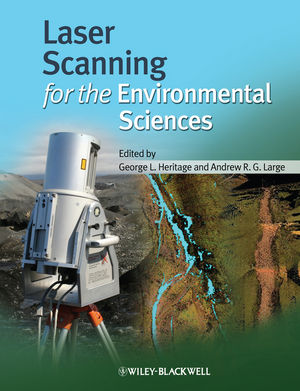Laser Scanning for the Environmental SciencesISBN: 978-1-4051-5717-9
Hardcover
288 pages
April 2009, Wiley-Blackwell
 |
||||||
3D surface representation has long been a source of information describing surface character and facilitating an understanding of system dynamics from micro-scale (e.g. sand transport) to macro-scale (e.g. drainage channel network evolution). Data collection has been achieved through field mapping techniques and the use of remotely sensed data. Advances in this latter field have been considerable in recent years with new rapid-acquisition methods being developed centered around laser based technology. The advent of airborne and field based laser scanning instruments has allowed researchers to collect high density accurate data sets and these are revealing a wealth of new information and generating important new ideas concerning terrain characterisation and landform dynamics.
The proposed book collates a series of invited peer revieved papers presented at the a conference on geoinformatics and LIDAR to be held at the National Centre for Geocomputation based in the National University of Ireland, Maynooth. Current constraints in field survey and DEM construction are reviewed together with technical and applied issues around the new technology. The utility of the data in process modelling is also covered. The book will be of great value to researchers in the field of geomorphology, geostatistics, remote sensing and GIS and will prove extremely useful to students and practitioners concerned with terrain analysis. The proposed work will:
- Highlight major technological breakthrough in 3D data collection.
- Feature examples of application across a wide range of environmental areas.
- Critically evaluate the role of laser based techniques in the environment.
- Detail theory and application of laser techniques in the natural environment.



